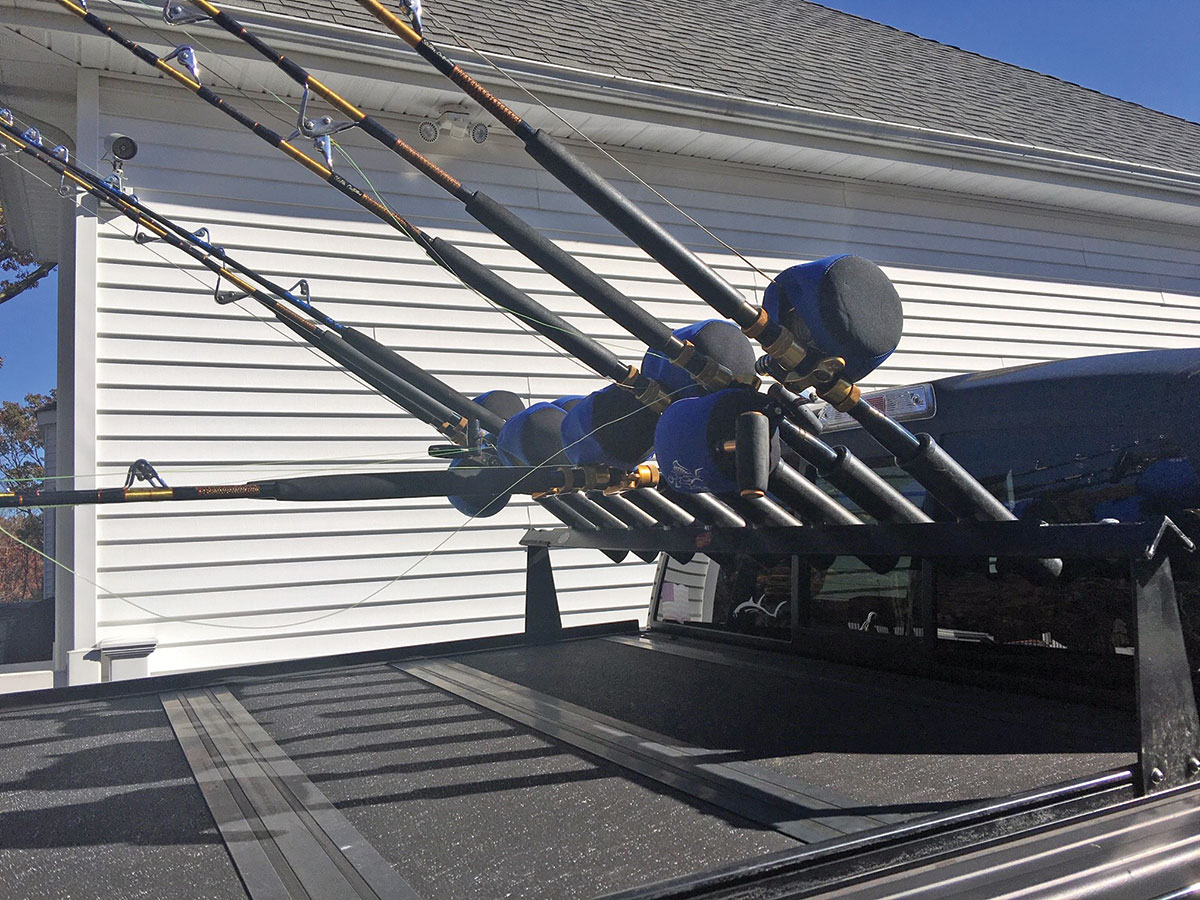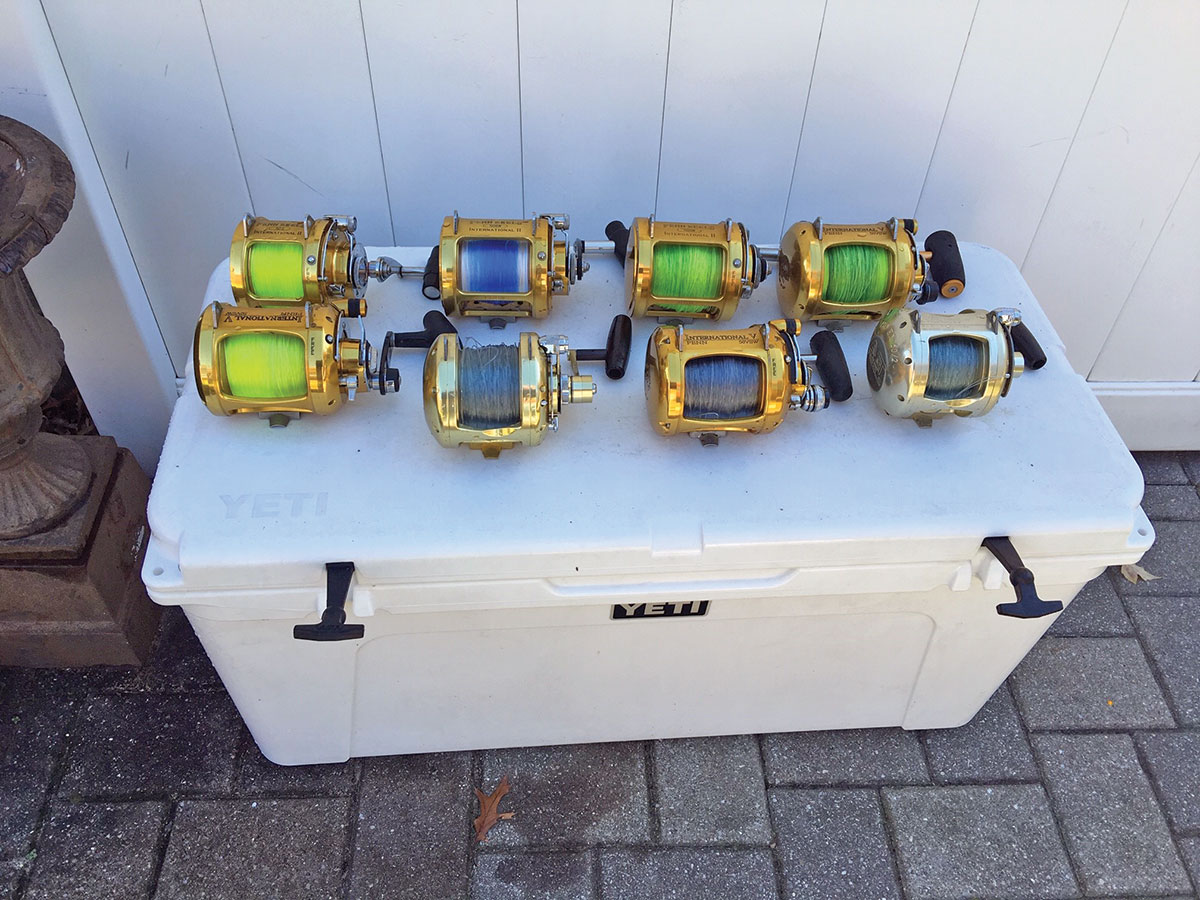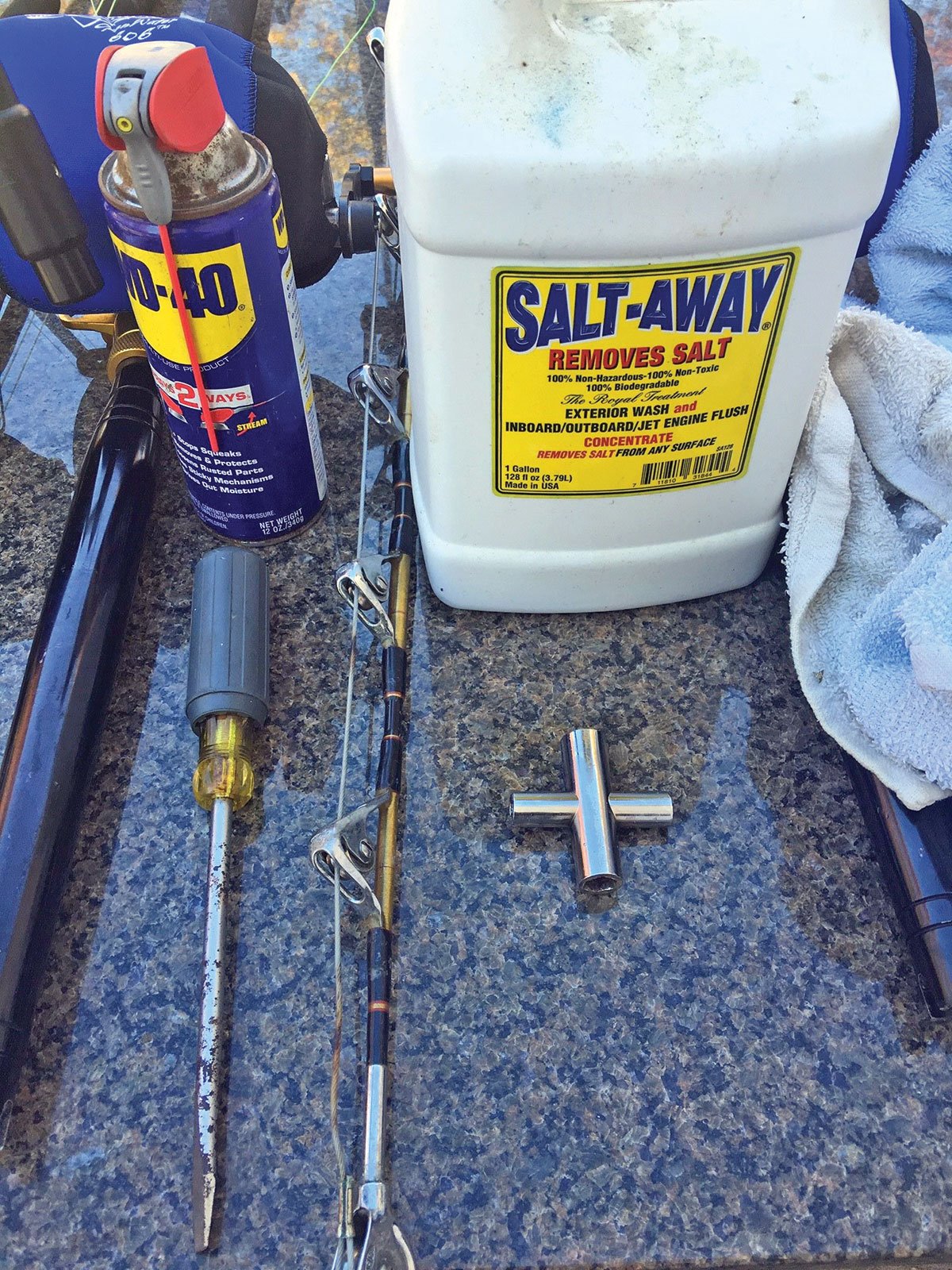
Take care of your tools and your tools will take care of you.
As winter approaches many captains and crews spend countless hours winterizing their boats. But did you think to winterize your fishing gear too? Part of winterizing is preparing for long-term storage. Unlike your boat you will not need antifreeze, but you do need to clean and prepare your gear for storage.
One of the easiest, yet most often overlooked steps in caring for your equipment, is the method you use for transport and storage. Neoprene covers are an inexpensive yet vital precaution for all of your reels. Covers prevent nicks and dings and add a measure of padding. Also, it is important to have a rod rack for your SUV or truck to assist in transport. If the rack is removable it may be removed and used inside as well. From time to time you will see used reels advertised as having boat rash. I would guess that 90 percent of “boat rash” occurs while being transported to and from the boat. If you just toss them in the back of your truck bed, then they are sure to get marked up. The covers as well as the rod rack offer great protection when transporting.
Reel Time

Pre-winter breakdown is what you do to store rods and reels prior to complete internal servicing. During the winter the reel should undergo a complete cleaning of internal mechanisms as well. For the initial prep I use Salt Away in a bucket of warm water. Tools needed include a screw driver, 7/16 wrench, line cutter, an x wrench (or deep sockets for reel clamp removal). Start by cutting off snaps, swivels, lures or anything tied directly to the line and drop them in the bucket of Salt Away. Put the reel in strike position and reel in excess line. Leave the reel in strike for the remainder of cleaning. Remove the reel clamp hardware, add all the components to your bucket and allow to soak. During the season salt will buildup and corrode all of these components.
Loosen the collet nuts (You may need a strap wrench.) that secures the reel to the rod. And remove the reel. I put a decent amount of grease between the reel and the reel seat in the spring, so I use a paper towel to remove it now. Using a white hand towel soaked in the Salt Away solution, clean all exterior parts. With clean water, rinse the reel using a gentle spray (not a jet.) Then sit the reels upright and allow them to completely dry. The reels have drainage holes on the bottom, so drying them upright allows any internal water to drain. Take towel and ensure the exterior is dry and take the pressure off the drag washer and spring by pulling the lever back to free spool.
Once dry use thick blue painter’s tape to cover the spool of line. With the line covered, coat the exterior with a low viscosity penetrating oil like WD-40, Corrosion X, transmission fluid etc. This thin oil will work into the pores and act as a protective coating. Wrap the reel in a small hand towel to keep dust from collecting. There are many reel storage bags on the market, and most of them have padded dividers that keep the reels from collecting dust. In the middle of winter, you can address a complete servicing and cleaning of the interior components.
Rod Work
All the rods get cleaned as well, with special attention being paid to the roller guides. After cleaning and rinsing thoroughly let them air dry. Once dry I use a small, dry towel to assist in oiling the guides. Place the towel in your hand and then rest the guide in it; spray both sides of the guides using the towel to catch the over spray. Using a finger make sure every roller spins freely and has no salt build up or corrosion. If they do not spin freely it is important to take them apart now and clean the components thoroughly. You can use a tooth brush to clean the guide housing and the side of the rollers. Once dry add a small amount of grease and reassemble. If you wait to service the guides they can pass the point of requiring a simple cleaning and might need to be replaced; that can be costly.
A spray wax like furniture polish is a great way seal and coat the rod blanks. Similar to what you just did with the guides but using a fresh towel to catch the over spray, work up and down the rod blank coating the entire rod. Be careful not to spray the grips, and wipe off the excess when done. Rods should be hung straight up and down or horizontally. If they are laid up against a wall over time the blank will form a curve. This bend will be etched into the memory of the rod blank and is very difficult to correct.
Love For The Lures

A thorough cleaning and inspection of your lures should be done now, too. Inspect each leader for nicks and cuts. Pay special attention to its appearance as well. If it looks chalky or stretched, then replace it. When in doubt change it out! If you find issues but don’t have time to re-rig, cut the leader just above the lure and tie a knot so it all stays together. When you circle back to re-rig it you will have a guide on how it was rigged and often you can re-use components such as beads, hooks, chafe gear, etc. Cutting it when you discover an issue will guarantee you don’t accidently overlook it and throw it into your trolling spread come spring time.
Any lure or spreader bar that has plastic or rubber skirts needs cleaning too, and simple soapy water will do the trick. After they are cleaned and thoroughly dried applying a wax prior to storage will keep them looking like new. This extra step also prevents dry rot and ensures they are pliable in the spring. Again, spray furniture polish is readily available and works well.
Like your rods, mono and especially fluorocarbon develops memory too. Hanging your lures with the leaders stretched out will prevent this. This is a much better option than leaving them coiled or bunched up in lure bags. When inspecting the lures check for signs of wear that may need repair. Resin heads chip, fade and crack. If it’s really bad replace them altogether. Skirts get pulled and cut so if there are too many pieces missing replace the entire skirt. Epoxy model paint is a great way to breathe new life into faded or chipped lures. Just keep in mind sometimes fish like the beat-up, old-looking lure more than the shiny new one.
Fishing tackle is expensive. With a little work and attention, you will be amazed at how long your gear will last. Not only will they look great, but they will perform flawlessly. If you don’t have the time or capacity to care for your reels, many tackle shops will clean and re grease them for you. It’s also nice to have a pro go over them to look for mechanical flaws as well. The same goes for rigging lures. Tackle shops with bench crimpers (for a small fee) will re-work your gear. It’s also nice to patronize your local tackle shop when things are slow for them in the winter.




